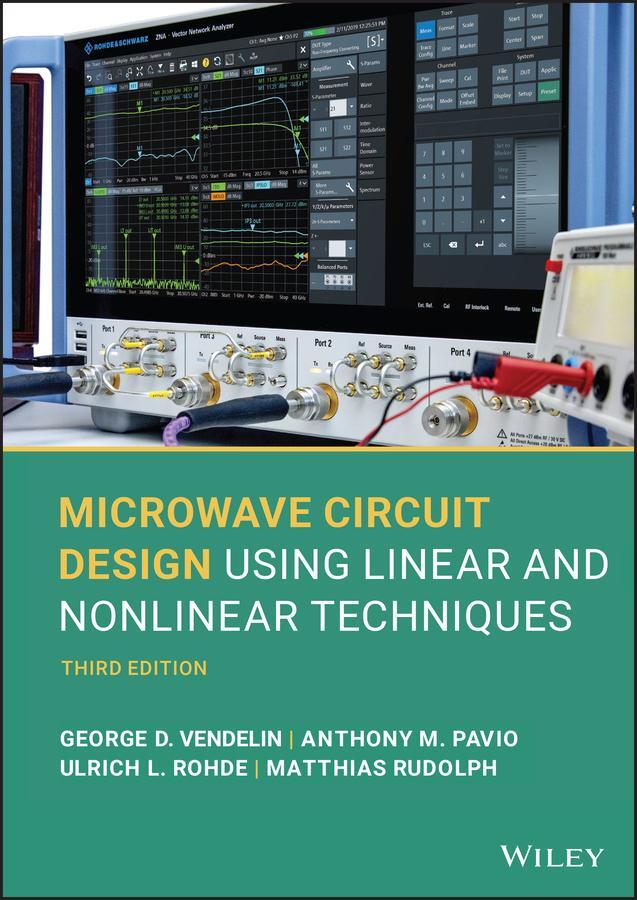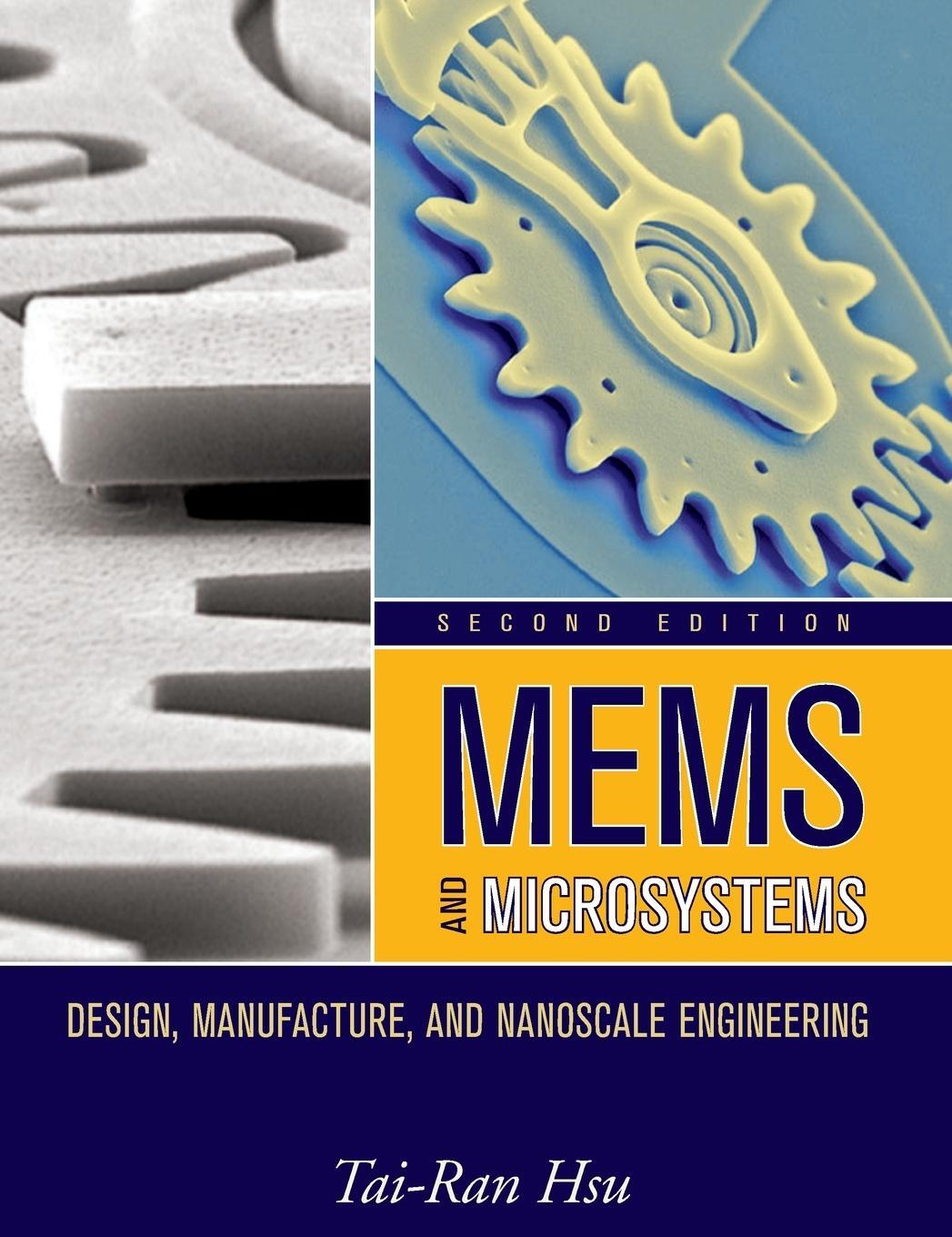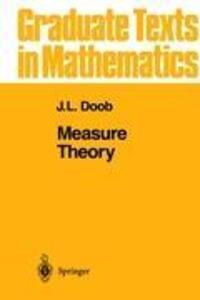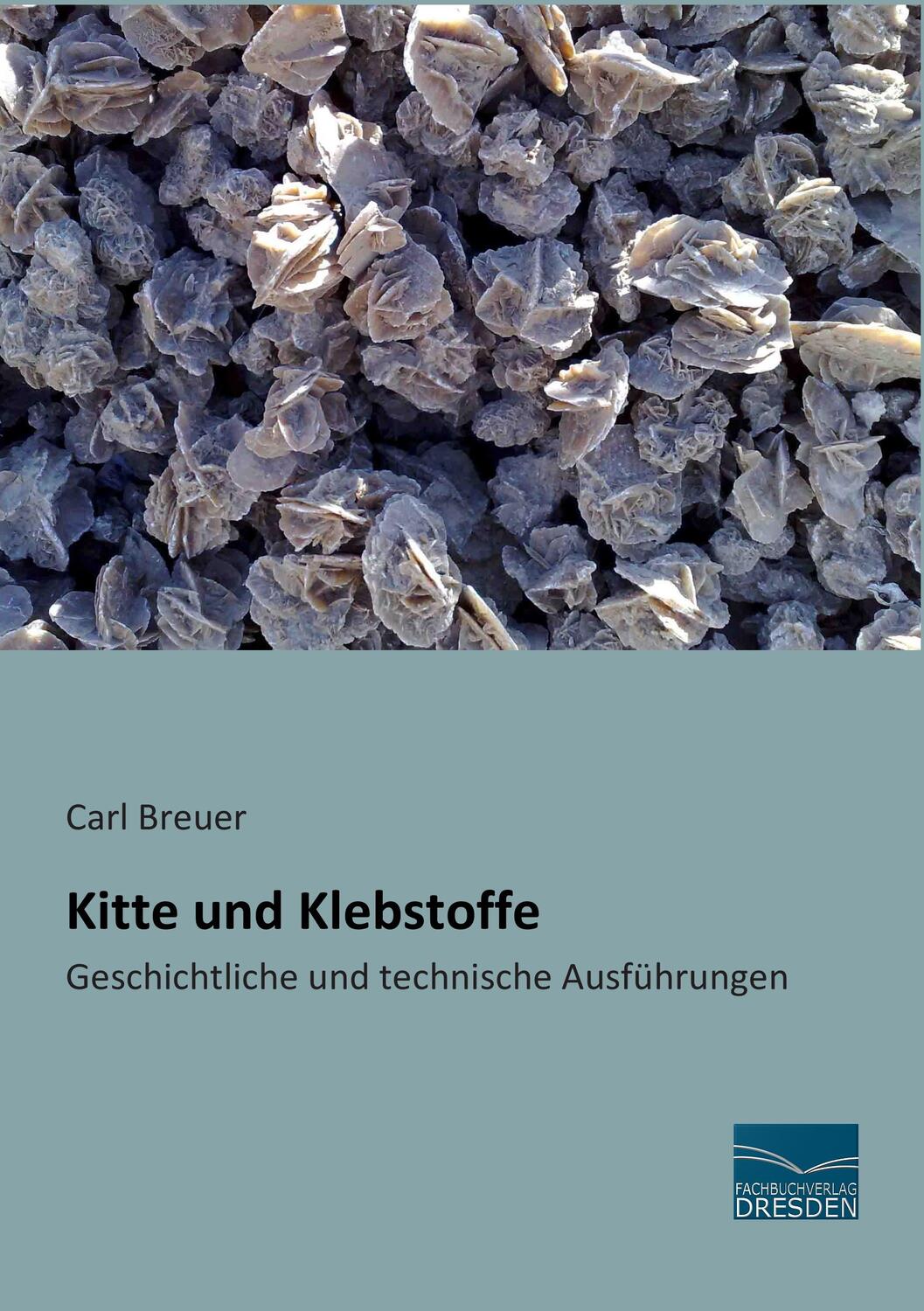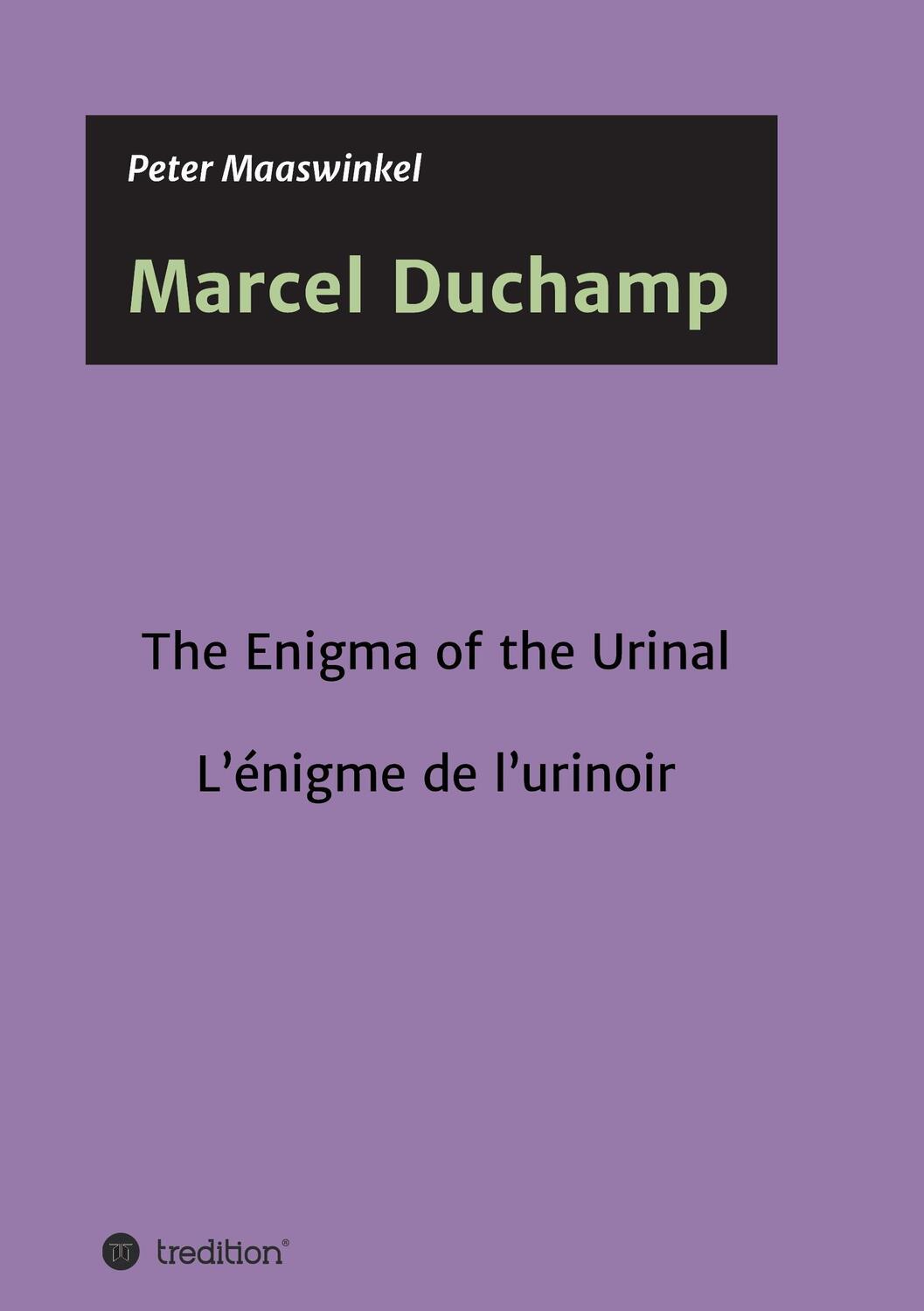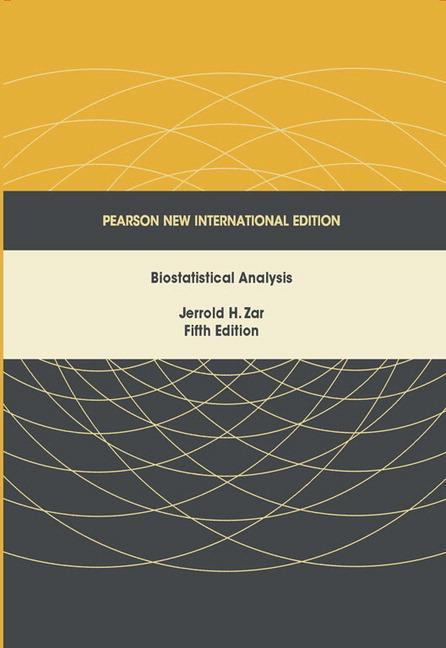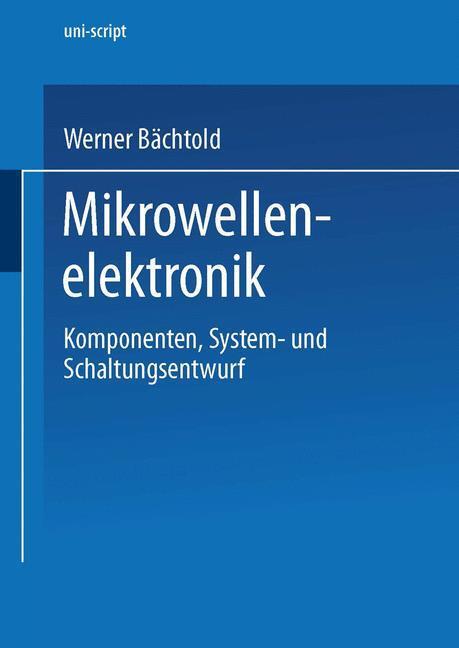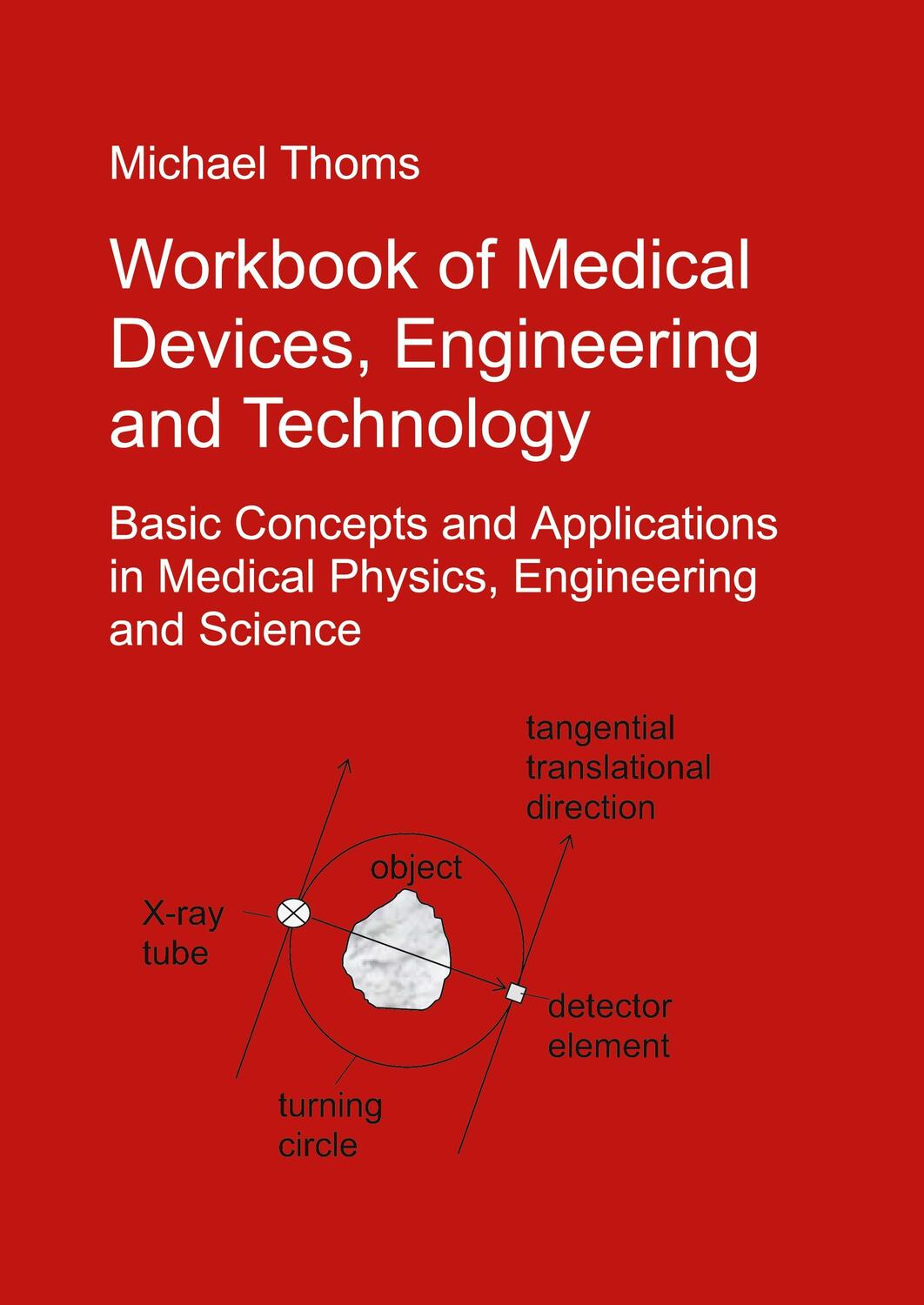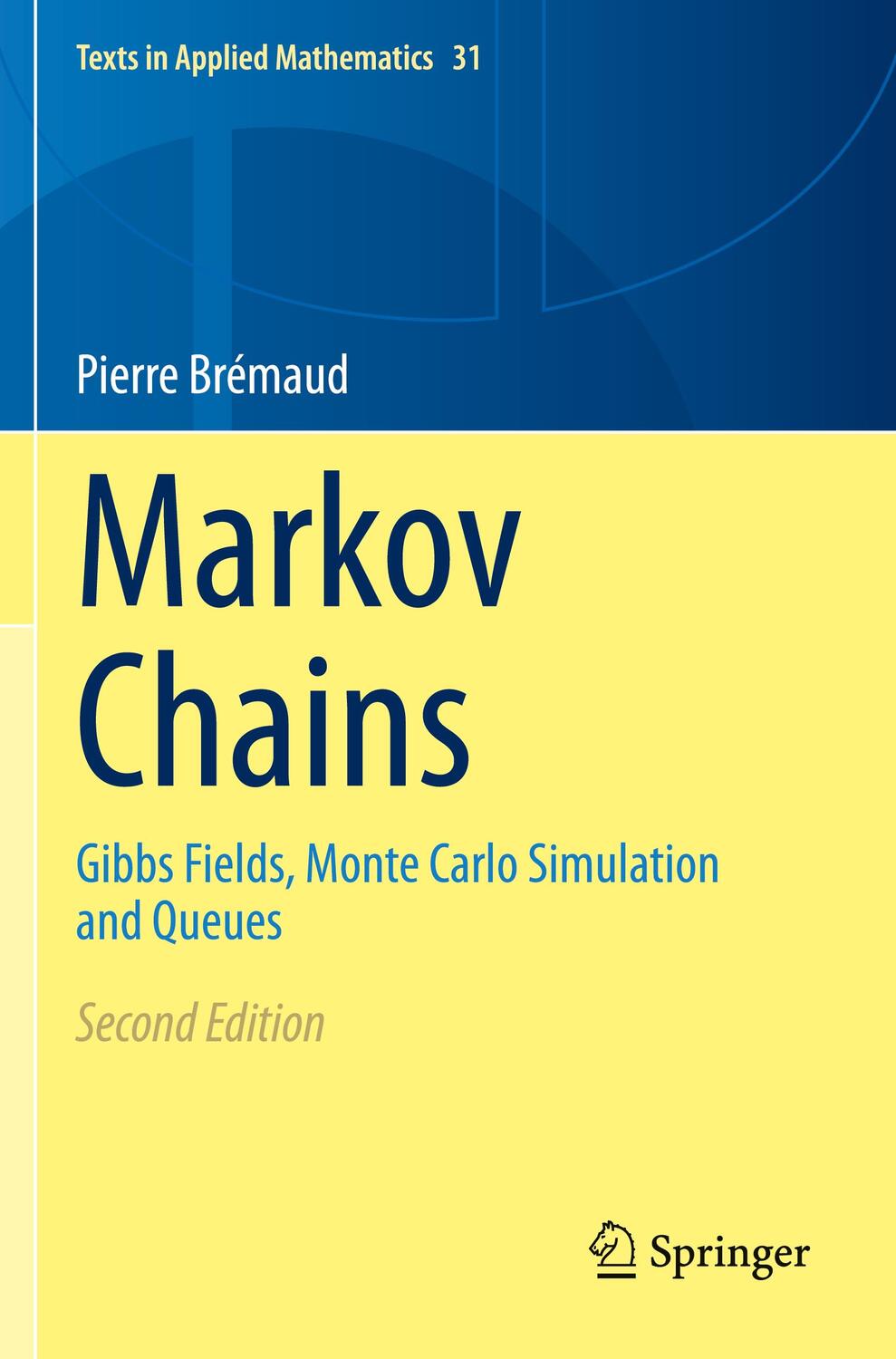199,50 €*
Versandkostenfrei per Post / DHL
Aktuell nicht verfügbar
The third edition of Microwave Circuit Design Using Linear and Nonlinear Techniques delivers an insightful and complete analysis of microwave circuit design, from their intrinsic and circuit properties to circuit design techniques for maximizing performance in communication and radar systems. This new edition retains what remains relevant from previous editions of this celebrated book and adds brand-new content on CMOS technology, GaN, SiC, frequency range, and feedback power amplifiers in the millimeter range region. The third edition contains over 200 pages of new material.
The distinguished engineers, academics, and authors emphasize the commercial applications in telecommunications and cover all aspects of transistor technology. Software tools for design and microwave circuits are included as an accompaniment to the book. In addition to information about small and large-signal amplifier design and power amplifier design, readers will benefit from the book's treatment of a wide variety of topics, like:
* An in-depth discussion of the foundations of RF and microwave systems, including Maxwell's equations, applications of the technology, analog and digital requirements, and elementary definitions
* A treatment of lumped and distributed elements, including a discussion of the parasitic effects on lumped elements
* Descriptions of active devices, including diodes, microwave transistors, heterojunction bipolar transistors, and microwave FET
* Two-port networks, including S-Parameters from SPICE analysis and the derivation of transducer power gain
Perfect for microwave integrated circuit designers, the third edition of Microwave Circuit Design Using Linear and Nonlinear Techniques also has a place on the bookshelves of electrical engineering researchers and graduate students. It's comprehensive take on all aspects of transistors by world-renowned experts in the field places this book at the vanguard of microwave circuit design research.
The third edition of Microwave Circuit Design Using Linear and Nonlinear Techniques delivers an insightful and complete analysis of microwave circuit design, from their intrinsic and circuit properties to circuit design techniques for maximizing performance in communication and radar systems. This new edition retains what remains relevant from previous editions of this celebrated book and adds brand-new content on CMOS technology, GaN, SiC, frequency range, and feedback power amplifiers in the millimeter range region. The third edition contains over 200 pages of new material.
The distinguished engineers, academics, and authors emphasize the commercial applications in telecommunications and cover all aspects of transistor technology. Software tools for design and microwave circuits are included as an accompaniment to the book. In addition to information about small and large-signal amplifier design and power amplifier design, readers will benefit from the book's treatment of a wide variety of topics, like:
* An in-depth discussion of the foundations of RF and microwave systems, including Maxwell's equations, applications of the technology, analog and digital requirements, and elementary definitions
* A treatment of lumped and distributed elements, including a discussion of the parasitic effects on lumped elements
* Descriptions of active devices, including diodes, microwave transistors, heterojunction bipolar transistors, and microwave FET
* Two-port networks, including S-Parameters from SPICE analysis and the derivation of transducer power gain
Perfect for microwave integrated circuit designers, the third edition of Microwave Circuit Design Using Linear and Nonlinear Techniques also has a place on the bookshelves of electrical engineering researchers and graduate students. It's comprehensive take on all aspects of transistors by world-renowned experts in the field places this book at the vanguard of microwave circuit design research.
George D. Vendelin is Adjunct Professor at Stanford, Santa Clara, and San Jose State Universities, as well as UC-Berkeley-Extension. He is a Fellow of the IEEE and has over 40 years of microwave engineering design and teaching experience.
Anthony M. Pavio, PhD, is Manager of the Phoenix Design Center for Rockwell Collins. He is a Fellow of the IEEE and was previously Manager at the Integrated RF Ceramics Center for Motorola Labs.
Ulrich L. Rohde is a Professor of Technical Informatics, University of the Joint Armed Forces, in Munich, Germany; a member of the staff of other universities world-wide; partner of Rohde & Schwarz, Munich; and Chairman of the Board of Synergy Microwave Corporation. He is the author of two editions of Microwave and Wireless Synthesizers: Theory and Design.
Dr.-Ing. Matthias Rudolph is Ulrich L. Rohde Professor for RF and Microwave Techniques at Brandenburg University of Technology in Cottbus, Germany and heads the low-noise components lab at the Ferdinand-Braun-Institut, Leibniz-Institut fuer Hoechstfrequenztechnik in Berlin.
Preface To The Third Edition xix
1 RF/Microwave Systems 1
1.1 Introduction 1
1.2 Maxwell's Equations 11
1.3 Frequency Bands, Modes, and Waveforms of Operation 13
1.4 Analog and Digital Signals 15
1.5 Elementary Functions 26
1.6 Basic RF Transmitters and Receivers 32
1.7 RF Wireless/Microwave/Millimeter Wave Applications 34
1.8 Modern CAD for Nonlinear Circuit Analysis 37
1.9 Dynamic Load Line 38
References 39
Bibliography 40
Problems 41
2 Lumped and Distributed Elements 43
2.1 Introduction 43
2.2 Transition from RF to Microwave Circuits 43
2.3 Parasitic Effects on Lumped Elements 46
2.4 Distributed Elements 53
2.5 Hybrid Element: Helical Coil 54
References 55
Bibliography 57
Problems 57
3 Active Devices 59
3.1 Introduction 59
3.2 Diodes 60
3.2.1 Large-Signal Diode Model 61
3.2.2 Mixer and Detector Diodes 65
3.2.3 Parameter Trade-Offs 70
3.2.4 Mixer Diodes 72
3.2.5 PIN Diodes 73
3.2.6 Tuning Diodes 84
3.2.7 Q Factor or Diode Loss 94
3.2.8 Diode Problems 99
3.2.9 Diode-Tuned Resonant Circuits 105
3.3 Microwave Transistors 110
3.3.1 Transistor Classification 110
3.3.2 Bipolar Transistor Basics 113
3.3.3 GaAs and InP Heterojunction Bipolar Transistors 127
3.3.4 SiGe HBTs 141
3.3.5 Field-Effect Transistor Basics 147
3.3.6 GaN, GaAs, and InP HEMTs 158
3.3.7 MOSFETs 165
3.3.8 Packaged Transistors 182
3.4 Example: Selecting Transistor and Bias for Low-Noise Amplification 186
3.5 Example: Selecting Transistor and Bias for Oscillator Design 191
3.6 Example: Selecting Transistor and Bias for Power Amplification 194
3.6.1 Biasing HEMTs 196
3.6.2 Biasing HBTs 198
References 200
Bibliography 203
Problems 204
4 Two-Port Networks 205
4.1 Introduction 205
4.2 Two-Port Parameters 206
4.3 S Parameters 216
4.4 S Parameters from SPICE Analysis 216
4.5 Mason Graphs 217
4.6 Stability 221
4.7 Power Gains, Voltage Gain, and Current Gain 223
4.7.1 Power Gain 223
4.7.2 Voltage Gain and Current Gain 229
4.7.3 Current Gain 230
4.8 Three-Ports 231
4.9 Derivation of Transducer Power Gain 234
4.10 Differential S Parameters 236
4.10.1 Measurements 239
4.10.2 Example 239
4.11 Twisted-Wire Pair Lines 240
4.12 Low-Noise and High-Power Amplifier Design 242
4.13 Low-Noise Amplifier Design Examples 245
References 254
Bibliography 255
Problems 255
5 Impedance Matching 261
5.1 Introduction 261
5.2 Smith Charts and Matching 261
5.3 Impedance Matching Networks 269
5.4 Single-Element Matching 269
5.5 Two-Element Matching 271
5.6 Matching Networks Using Lumped Elements 272
5.7 Matching Networks Using Distributed Elements 273
5.7.1 Twisted-Wire Pair Transformers 273
5.7.2 Transmission Line Transformers 274
5.7.3 Tapered Transmission Lines 276
5.8 Bandwidth Constraints for Matching Networks 277
References 287
BIBLIOGRAPHY 288
PROBLEMS 288
6 Microwave Filters 294
6.1 Introduction 294
6.2 Low-Pass Prototype Filter Design 295
6.2.1 Butterworth Response 295
6.2.2 Chebyshev Response 297
6.3 Transformations 302
6.3.1 Low-Pass Filters: Frequency and Impedance Scaling 302
6.3.2 High-Pass Filters 302
6.3.3 Bandpass Filters 304
6.3.4 Narrow-Band Bandpass Filters 306
6.3.5 Band-Stop Filters 309
6.4 Transmission Line Filters 312
6.4.1 Semilumped Low-Pass Filters 315
6.4.2 Richards Transformation 318
6.5 Exact Designs and CAD Tools 325
6.6 Real-Life Filters 326
6.6.1 Lumped Elements 326
6.6.2 Transmission Line Elements 327
6.6.3 Cavity Resonators 327
6.6.4 Coaxial Dielectric Resonators 327
6.6.5 Thin-Film Bulk-Wave Acoustic Resonator (FBAR) 327
References 330
Bibliography 330
Problems 330
7 Noise In Linear and Nonlinear Two-Ports 332
7.1 Introduction 332
7.2 Signal-to-Noise Ratio 334
7.3 Noise Figure Measurements 336
7.4 Noise Parameters and Noise Correlation Matrix 338
7.4.1 Correlation Matrix 338
7.4.2 Method of Combining Two-Port Matrix 339
7.4.3 Noise Transformation Using the [ABCD] Noise Correlation Matrices 339
7.4.4 Relation Between the Noise Parameter and [CA] 340
7.4.5 Representation of the ABCD Correlation Matrix in Terms of Noise Parameters [7.4] 342
7.4.6 Noise Correlation Matrix Transformations 342
7.4.7 Matrix Definitions of Series and Shunt Element 343
7.4.8 Transferring All Noise Sources to the Input 344
7.4.9 Transformation of the Noise Sources 345
7.4.10 ABCD Parameters for CE, CC, and CB Configurations 345
7.5 Noisy Two-Port Description 347
7.6 Noise Figure of Cascaded Networks 353
7.7 Influence of External Parasitic Elements 354
7.8 Noise Circles 357
7.9 Noise Correlation in Linear Two-Ports Using Correlation Matrices 360
7.10 Noise Figure Test Equipment 363
7.11 How to Determine Noise Parameters 365
7.12 Noise in Nonlinear Circuits 366
7.12.1 Noise Sources in the Nonlinear Domain 368
7.13 Transistor Noise Modeling 371
7.13.1 Noise Modeling of Bipolar and Heterobipolar Transistors 372
7.13.2 Noise Modeling of Field-effect Transistors 384
References 390
Bibliography 393
Problems 395
8 Small- and Large-Signal Amplifier Design 397
8.1 Introduction 397
8.2 Single-Stage Amplifier Design 399
8.2.1 High Gain 399
8.2.2 Maximum Available Gain and Unilateral Gain 400
8.2.3 Low-Noise Amplifier 407
8.2.4 High-Power Amplifier 409
8.2.5 Broadband Amplifier 410
8.2.6 Feedback Amplifier 411
8.2.7 Cascode Amplifier 413
8.2.8 Multistage Amplifier 420
8.2.9 Distributed Amplifier and Matrix Amplifier 421
8.2.10 Millimeter-Wave Amplifiers 425
8.3 Frequency Multipliers 426
8.3.1 Introduction 426
8.3.2 Passive Frequency Multiplication 426
8.3.3 Active Frequency Multiplication 427
8.4 Design Example of 1.9-GHz PCS and 2.1-GHz W-CDMA Amplifiers 429
8.5 Stability Analysis and Limitations 430
References 435
Bibliography 438
Problems 440
9 Power Amplifier Design 442
9.1 Introduction 442
9.2 Characterizing Transistors for Power-Amplifier Design 445
9.3 Single-Stage Power Amplifier Design 449
9.4 Multistage Design 455
9.5 Power-Distributed Amplifiers 462
9.6 Class of Operation 480
9.6.1 Optimizing Conduction Angle 481
9.6.2 Optimizing Harmonic Termination 490
9.6.3 Analog Switch-Mode Amplifiers 494
9.7 Efficiency and Linearity Enhancement PA Topologies 498
9.7.1 The Doherty Amplifier 499
9.7.2 Outphasing Amplifiers 502
9.7.3 Kahn EER and Envelope Tracking Amplifiers 505
9.8 Digital Microwave Power Amplifiers (class-D/S) 514
9.8.1 Voltage-Mode Topology 516
9.8.2 Current-Mode Topology 521
9.9 Power Amplifier Stability 527
References 530
Bibliography 534
Problems 536
10 Oscillator Design 538
10.1 Introduction 538
10.2 Compressed Smith Chart 544
10.3 Series or Parallel Resonance 545
10.4 Resonators 546
10.4.1 Dielectric Resonators 547
10.4.2 YIG Resonators 552
10.4.3 Varactor Resonators 552
10.4.4 Ceramic Resonators 556
10.4.5 Coupled Resonator 558
10.4.6 Resonator Measurements 564
10.5 Two-Port Oscillator Design 570
10.6 Negative Resistance From Transistor Model 579
10.7 Oscillator Q and Output Power 586
10.8 Noise in Oscillators: Linear Approach 590
10.8.1 Leeson's Oscillator Model 590
10.8.2 Low-Noise Design 596
10.9 Analytic Approach to Optimum Oscillator Design Using S Parameters 608
10.10 Nonlinear Active Models for Oscillators 621
10.10.1 Diodes with Hyperabrupt Junction 623
10.10.2 Silicon Versus Gallium Arsenide 624
10.10.3 Expressions for gm and Gd 625
10.10.4 Nonlinear Expressions for Cgs, Ggf, and Ri 627
10.10.5 Analytic Simulation of I-V Characteristics 628
10.10.6 Equivalent-Circuit Derivation 628
10.10.7 Determination of Oscillation Conditions 631
10.10.8 Nonlinear Analysis 631
10.10.9 Conclusion 632
10.11 Oscillator Design Using Nonlinear Cad Tools 632
10.11.1 Parameter Extraction Method 637
10.11.2 Example of Nonlinear Design Methodology: 4-GHz Oscillator- Amplifier 639
10.11.3 Conclusion 645
10.12 Microwave Oscillators Performance 647
10.13 Design of an Oscillator Using Large-Signal Y Parameters 651
10.14 Example for Large-Signal Design Based on Bessel Functions 653
10.15 Design Example for Best Phase Noise and Good Output Power 658
Requirements 658
Design Steps 658
Design Calculations 662
10.16 A Design Example for a 350 MHz Fixed Frequency Colpitts Oscillator 666
Step 1: 667
Step 2: Biasing 667
Step 3: Determination of the Large Signal Transconductance 668
10.17 1/f NOISE 678
10.18 2400 MHz MOSFET-Based Push-Pull Oscillator 681
10.18.1 Design Equations 682
10.18.2 Design Calculations 687
10.18.3 Phase Noise 688
10.19 CAD Solution for Calculating Phase Noise in Oscillators 691
10.19.1 General Analysis of Noise Due to Modulation and Conversion in Oscillators 691
10.19.2 Modulation by a Sinusoidal Signal 692
10.19.3 Modulation by a Noise Signal 693
10.19.4 Oscillator Noise Models 695
10.19.5 Modulation and Conversion Noise 696
10.19.6 Nonlinear Approach for Computation of Noise Analysis of Oscillator Circuits 696
10.19.7 Noise Generation in Oscillators 699
10.19.8 Frequency Conversion Approach 699
10.19.9 Conversion Noise Analysis 699
10.19.10 Noise Performance Index Due to Frequency Conversion 700
10.19.11 Modulation Noise Analysis 702
10.19.12 Noise Performance Index Due to Contribution of Modulation Noise 704
10.19.13 PM-AM Correlation Coefficient 705
10.20 Phase Noise Measurement 706
10.20.1 Phase Noise Measurement Techniques 706
10.21 Back to Conventional Phase Noise Measurement System (Hewlett-Packard) 724
10.22 State-of-the-art 730
10.22.1 Analog Signal Path 730
10.22.2 Digital Signal Path 732
10.22.3 Pulsed Phase Noise Measurement 735
10.22.4 Cross-Correlation 736
10.23 Instrument Performance 737
10.24 Noise in Circuits and Semiconductors [10.74] 738
10.25 Validation Circuits 742
10.25.1 1000-MHz Ceramic Resonator Oscillator (CRO) 742
10.25.2 4100-MHz Oscillator with Transmission Line Resonators 745
10.25.3 2000-MHz GaAs FET-Based Oscillator 747
10.26 Analytical Approach for Designing Efficient Microwave FET and Bipolar Oscillators (Optimum Power) 751
10.26.1 Series Feedback...
| Erscheinungsjahr: | 2021 |
|---|---|
| Fachbereich: | Nachrichtentechnik |
| Genre: | Technik |
| Rubrik: | Naturwissenschaften & Technik |
| Medium: | Buch |
| Seiten: | 1200 |
| Inhalt: | 1200 S. |
| ISBN-13: | 9781118449752 |
| ISBN-10: | 1118449754 |
| Sprache: | Englisch |
| Einband: | Gebunden |
| Autor: |
Vendelin, George D
Pavio, Anthony M Rohde, Ulrich L Rudolph, Matthias |
| Auflage: | 3rd Revised edition |
| Hersteller: |
Wiley
John Wiley & Sons |
| Maße: | 257 x 185 x 51 mm |
| Von/Mit: | George D Vendelin (u. a.) |
| Erscheinungsdatum: | 27.04.2021 |
| Gewicht: | 2 kg |
George D. Vendelin is Adjunct Professor at Stanford, Santa Clara, and San Jose State Universities, as well as UC-Berkeley-Extension. He is a Fellow of the IEEE and has over 40 years of microwave engineering design and teaching experience.
Anthony M. Pavio, PhD, is Manager of the Phoenix Design Center for Rockwell Collins. He is a Fellow of the IEEE and was previously Manager at the Integrated RF Ceramics Center for Motorola Labs.
Ulrich L. Rohde is a Professor of Technical Informatics, University of the Joint Armed Forces, in Munich, Germany; a member of the staff of other universities world-wide; partner of Rohde & Schwarz, Munich; and Chairman of the Board of Synergy Microwave Corporation. He is the author of two editions of Microwave and Wireless Synthesizers: Theory and Design.
Dr.-Ing. Matthias Rudolph is Ulrich L. Rohde Professor for RF and Microwave Techniques at Brandenburg University of Technology in Cottbus, Germany and heads the low-noise components lab at the Ferdinand-Braun-Institut, Leibniz-Institut fuer Hoechstfrequenztechnik in Berlin.
Preface To The Third Edition xix
1 RF/Microwave Systems 1
1.1 Introduction 1
1.2 Maxwell's Equations 11
1.3 Frequency Bands, Modes, and Waveforms of Operation 13
1.4 Analog and Digital Signals 15
1.5 Elementary Functions 26
1.6 Basic RF Transmitters and Receivers 32
1.7 RF Wireless/Microwave/Millimeter Wave Applications 34
1.8 Modern CAD for Nonlinear Circuit Analysis 37
1.9 Dynamic Load Line 38
References 39
Bibliography 40
Problems 41
2 Lumped and Distributed Elements 43
2.1 Introduction 43
2.2 Transition from RF to Microwave Circuits 43
2.3 Parasitic Effects on Lumped Elements 46
2.4 Distributed Elements 53
2.5 Hybrid Element: Helical Coil 54
References 55
Bibliography 57
Problems 57
3 Active Devices 59
3.1 Introduction 59
3.2 Diodes 60
3.2.1 Large-Signal Diode Model 61
3.2.2 Mixer and Detector Diodes 65
3.2.3 Parameter Trade-Offs 70
3.2.4 Mixer Diodes 72
3.2.5 PIN Diodes 73
3.2.6 Tuning Diodes 84
3.2.7 Q Factor or Diode Loss 94
3.2.8 Diode Problems 99
3.2.9 Diode-Tuned Resonant Circuits 105
3.3 Microwave Transistors 110
3.3.1 Transistor Classification 110
3.3.2 Bipolar Transistor Basics 113
3.3.3 GaAs and InP Heterojunction Bipolar Transistors 127
3.3.4 SiGe HBTs 141
3.3.5 Field-Effect Transistor Basics 147
3.3.6 GaN, GaAs, and InP HEMTs 158
3.3.7 MOSFETs 165
3.3.8 Packaged Transistors 182
3.4 Example: Selecting Transistor and Bias for Low-Noise Amplification 186
3.5 Example: Selecting Transistor and Bias for Oscillator Design 191
3.6 Example: Selecting Transistor and Bias for Power Amplification 194
3.6.1 Biasing HEMTs 196
3.6.2 Biasing HBTs 198
References 200
Bibliography 203
Problems 204
4 Two-Port Networks 205
4.1 Introduction 205
4.2 Two-Port Parameters 206
4.3 S Parameters 216
4.4 S Parameters from SPICE Analysis 216
4.5 Mason Graphs 217
4.6 Stability 221
4.7 Power Gains, Voltage Gain, and Current Gain 223
4.7.1 Power Gain 223
4.7.2 Voltage Gain and Current Gain 229
4.7.3 Current Gain 230
4.8 Three-Ports 231
4.9 Derivation of Transducer Power Gain 234
4.10 Differential S Parameters 236
4.10.1 Measurements 239
4.10.2 Example 239
4.11 Twisted-Wire Pair Lines 240
4.12 Low-Noise and High-Power Amplifier Design 242
4.13 Low-Noise Amplifier Design Examples 245
References 254
Bibliography 255
Problems 255
5 Impedance Matching 261
5.1 Introduction 261
5.2 Smith Charts and Matching 261
5.3 Impedance Matching Networks 269
5.4 Single-Element Matching 269
5.5 Two-Element Matching 271
5.6 Matching Networks Using Lumped Elements 272
5.7 Matching Networks Using Distributed Elements 273
5.7.1 Twisted-Wire Pair Transformers 273
5.7.2 Transmission Line Transformers 274
5.7.3 Tapered Transmission Lines 276
5.8 Bandwidth Constraints for Matching Networks 277
References 287
BIBLIOGRAPHY 288
PROBLEMS 288
6 Microwave Filters 294
6.1 Introduction 294
6.2 Low-Pass Prototype Filter Design 295
6.2.1 Butterworth Response 295
6.2.2 Chebyshev Response 297
6.3 Transformations 302
6.3.1 Low-Pass Filters: Frequency and Impedance Scaling 302
6.3.2 High-Pass Filters 302
6.3.3 Bandpass Filters 304
6.3.4 Narrow-Band Bandpass Filters 306
6.3.5 Band-Stop Filters 309
6.4 Transmission Line Filters 312
6.4.1 Semilumped Low-Pass Filters 315
6.4.2 Richards Transformation 318
6.5 Exact Designs and CAD Tools 325
6.6 Real-Life Filters 326
6.6.1 Lumped Elements 326
6.6.2 Transmission Line Elements 327
6.6.3 Cavity Resonators 327
6.6.4 Coaxial Dielectric Resonators 327
6.6.5 Thin-Film Bulk-Wave Acoustic Resonator (FBAR) 327
References 330
Bibliography 330
Problems 330
7 Noise In Linear and Nonlinear Two-Ports 332
7.1 Introduction 332
7.2 Signal-to-Noise Ratio 334
7.3 Noise Figure Measurements 336
7.4 Noise Parameters and Noise Correlation Matrix 338
7.4.1 Correlation Matrix 338
7.4.2 Method of Combining Two-Port Matrix 339
7.4.3 Noise Transformation Using the [ABCD] Noise Correlation Matrices 339
7.4.4 Relation Between the Noise Parameter and [CA] 340
7.4.5 Representation of the ABCD Correlation Matrix in Terms of Noise Parameters [7.4] 342
7.4.6 Noise Correlation Matrix Transformations 342
7.4.7 Matrix Definitions of Series and Shunt Element 343
7.4.8 Transferring All Noise Sources to the Input 344
7.4.9 Transformation of the Noise Sources 345
7.4.10 ABCD Parameters for CE, CC, and CB Configurations 345
7.5 Noisy Two-Port Description 347
7.6 Noise Figure of Cascaded Networks 353
7.7 Influence of External Parasitic Elements 354
7.8 Noise Circles 357
7.9 Noise Correlation in Linear Two-Ports Using Correlation Matrices 360
7.10 Noise Figure Test Equipment 363
7.11 How to Determine Noise Parameters 365
7.12 Noise in Nonlinear Circuits 366
7.12.1 Noise Sources in the Nonlinear Domain 368
7.13 Transistor Noise Modeling 371
7.13.1 Noise Modeling of Bipolar and Heterobipolar Transistors 372
7.13.2 Noise Modeling of Field-effect Transistors 384
References 390
Bibliography 393
Problems 395
8 Small- and Large-Signal Amplifier Design 397
8.1 Introduction 397
8.2 Single-Stage Amplifier Design 399
8.2.1 High Gain 399
8.2.2 Maximum Available Gain and Unilateral Gain 400
8.2.3 Low-Noise Amplifier 407
8.2.4 High-Power Amplifier 409
8.2.5 Broadband Amplifier 410
8.2.6 Feedback Amplifier 411
8.2.7 Cascode Amplifier 413
8.2.8 Multistage Amplifier 420
8.2.9 Distributed Amplifier and Matrix Amplifier 421
8.2.10 Millimeter-Wave Amplifiers 425
8.3 Frequency Multipliers 426
8.3.1 Introduction 426
8.3.2 Passive Frequency Multiplication 426
8.3.3 Active Frequency Multiplication 427
8.4 Design Example of 1.9-GHz PCS and 2.1-GHz W-CDMA Amplifiers 429
8.5 Stability Analysis and Limitations 430
References 435
Bibliography 438
Problems 440
9 Power Amplifier Design 442
9.1 Introduction 442
9.2 Characterizing Transistors for Power-Amplifier Design 445
9.3 Single-Stage Power Amplifier Design 449
9.4 Multistage Design 455
9.5 Power-Distributed Amplifiers 462
9.6 Class of Operation 480
9.6.1 Optimizing Conduction Angle 481
9.6.2 Optimizing Harmonic Termination 490
9.6.3 Analog Switch-Mode Amplifiers 494
9.7 Efficiency and Linearity Enhancement PA Topologies 498
9.7.1 The Doherty Amplifier 499
9.7.2 Outphasing Amplifiers 502
9.7.3 Kahn EER and Envelope Tracking Amplifiers 505
9.8 Digital Microwave Power Amplifiers (class-D/S) 514
9.8.1 Voltage-Mode Topology 516
9.8.2 Current-Mode Topology 521
9.9 Power Amplifier Stability 527
References 530
Bibliography 534
Problems 536
10 Oscillator Design 538
10.1 Introduction 538
10.2 Compressed Smith Chart 544
10.3 Series or Parallel Resonance 545
10.4 Resonators 546
10.4.1 Dielectric Resonators 547
10.4.2 YIG Resonators 552
10.4.3 Varactor Resonators 552
10.4.4 Ceramic Resonators 556
10.4.5 Coupled Resonator 558
10.4.6 Resonator Measurements 564
10.5 Two-Port Oscillator Design 570
10.6 Negative Resistance From Transistor Model 579
10.7 Oscillator Q and Output Power 586
10.8 Noise in Oscillators: Linear Approach 590
10.8.1 Leeson's Oscillator Model 590
10.8.2 Low-Noise Design 596
10.9 Analytic Approach to Optimum Oscillator Design Using S Parameters 608
10.10 Nonlinear Active Models for Oscillators 621
10.10.1 Diodes with Hyperabrupt Junction 623
10.10.2 Silicon Versus Gallium Arsenide 624
10.10.3 Expressions for gm and Gd 625
10.10.4 Nonlinear Expressions for Cgs, Ggf, and Ri 627
10.10.5 Analytic Simulation of I-V Characteristics 628
10.10.6 Equivalent-Circuit Derivation 628
10.10.7 Determination of Oscillation Conditions 631
10.10.8 Nonlinear Analysis 631
10.10.9 Conclusion 632
10.11 Oscillator Design Using Nonlinear Cad Tools 632
10.11.1 Parameter Extraction Method 637
10.11.2 Example of Nonlinear Design Methodology: 4-GHz Oscillator- Amplifier 639
10.11.3 Conclusion 645
10.12 Microwave Oscillators Performance 647
10.13 Design of an Oscillator Using Large-Signal Y Parameters 651
10.14 Example for Large-Signal Design Based on Bessel Functions 653
10.15 Design Example for Best Phase Noise and Good Output Power 658
Requirements 658
Design Steps 658
Design Calculations 662
10.16 A Design Example for a 350 MHz Fixed Frequency Colpitts Oscillator 666
Step 1: 667
Step 2: Biasing 667
Step 3: Determination of the Large Signal Transconductance 668
10.17 1/f NOISE 678
10.18 2400 MHz MOSFET-Based Push-Pull Oscillator 681
10.18.1 Design Equations 682
10.18.2 Design Calculations 687
10.18.3 Phase Noise 688
10.19 CAD Solution for Calculating Phase Noise in Oscillators 691
10.19.1 General Analysis of Noise Due to Modulation and Conversion in Oscillators 691
10.19.2 Modulation by a Sinusoidal Signal 692
10.19.3 Modulation by a Noise Signal 693
10.19.4 Oscillator Noise Models 695
10.19.5 Modulation and Conversion Noise 696
10.19.6 Nonlinear Approach for Computation of Noise Analysis of Oscillator Circuits 696
10.19.7 Noise Generation in Oscillators 699
10.19.8 Frequency Conversion Approach 699
10.19.9 Conversion Noise Analysis 699
10.19.10 Noise Performance Index Due to Frequency Conversion 700
10.19.11 Modulation Noise Analysis 702
10.19.12 Noise Performance Index Due to Contribution of Modulation Noise 704
10.19.13 PM-AM Correlation Coefficient 705
10.20 Phase Noise Measurement 706
10.20.1 Phase Noise Measurement Techniques 706
10.21 Back to Conventional Phase Noise Measurement System (Hewlett-Packard) 724
10.22 State-of-the-art 730
10.22.1 Analog Signal Path 730
10.22.2 Digital Signal Path 732
10.22.3 Pulsed Phase Noise Measurement 735
10.22.4 Cross-Correlation 736
10.23 Instrument Performance 737
10.24 Noise in Circuits and Semiconductors [10.74] 738
10.25 Validation Circuits 742
10.25.1 1000-MHz Ceramic Resonator Oscillator (CRO) 742
10.25.2 4100-MHz Oscillator with Transmission Line Resonators 745
10.25.3 2000-MHz GaAs FET-Based Oscillator 747
10.26 Analytical Approach for Designing Efficient Microwave FET and Bipolar Oscillators (Optimum Power) 751
10.26.1 Series Feedback...
| Erscheinungsjahr: | 2021 |
|---|---|
| Fachbereich: | Nachrichtentechnik |
| Genre: | Technik |
| Rubrik: | Naturwissenschaften & Technik |
| Medium: | Buch |
| Seiten: | 1200 |
| Inhalt: | 1200 S. |
| ISBN-13: | 9781118449752 |
| ISBN-10: | 1118449754 |
| Sprache: | Englisch |
| Einband: | Gebunden |
| Autor: |
Vendelin, George D
Pavio, Anthony M Rohde, Ulrich L Rudolph, Matthias |
| Auflage: | 3rd Revised edition |
| Hersteller: |
Wiley
John Wiley & Sons |
| Maße: | 257 x 185 x 51 mm |
| Von/Mit: | George D Vendelin (u. a.) |
| Erscheinungsdatum: | 27.04.2021 |
| Gewicht: | 2 kg |

